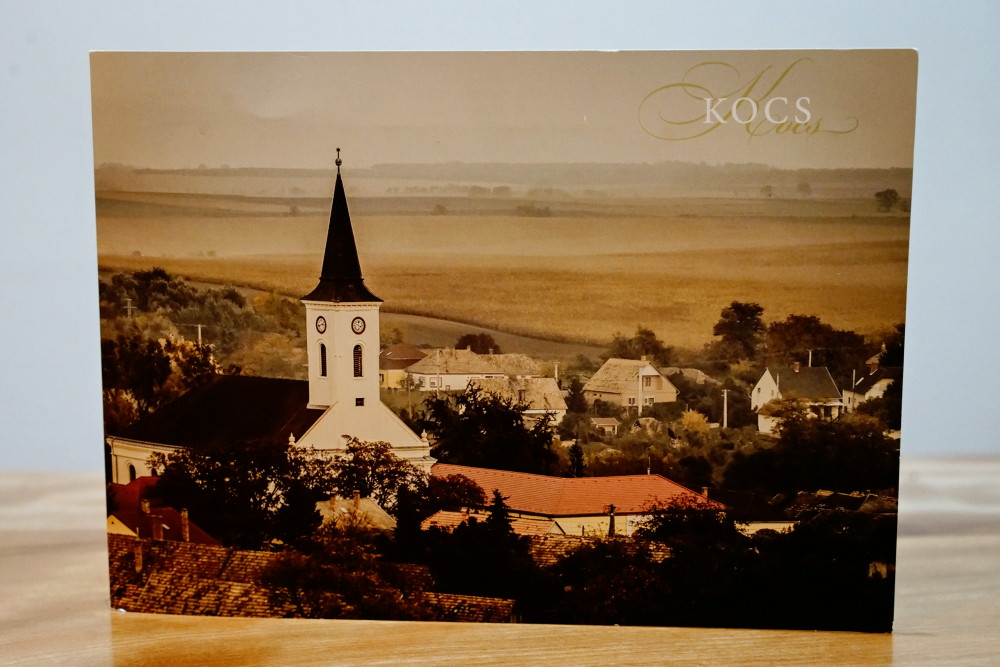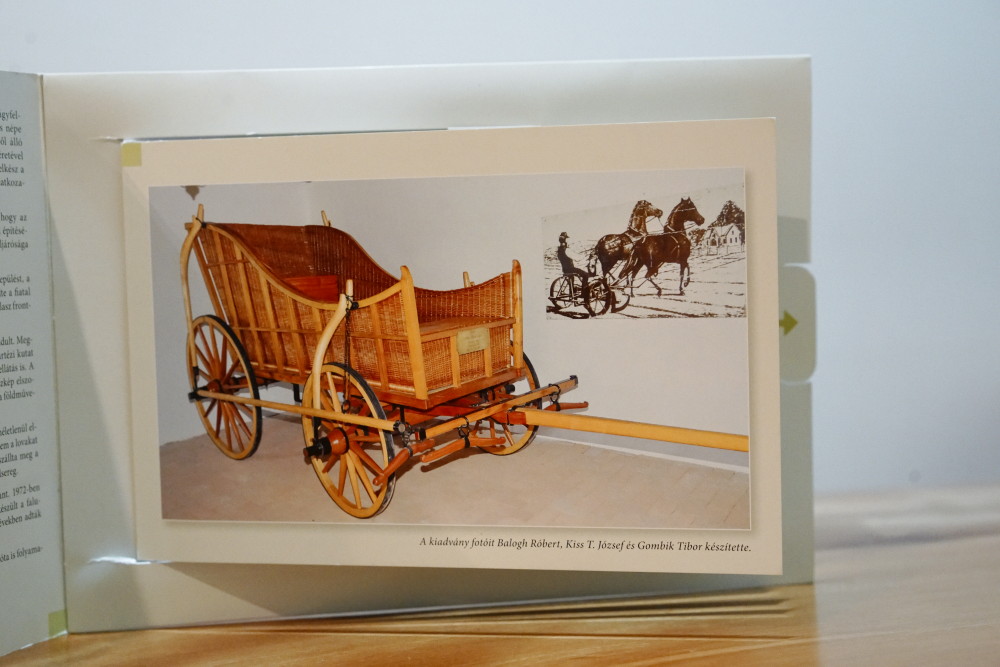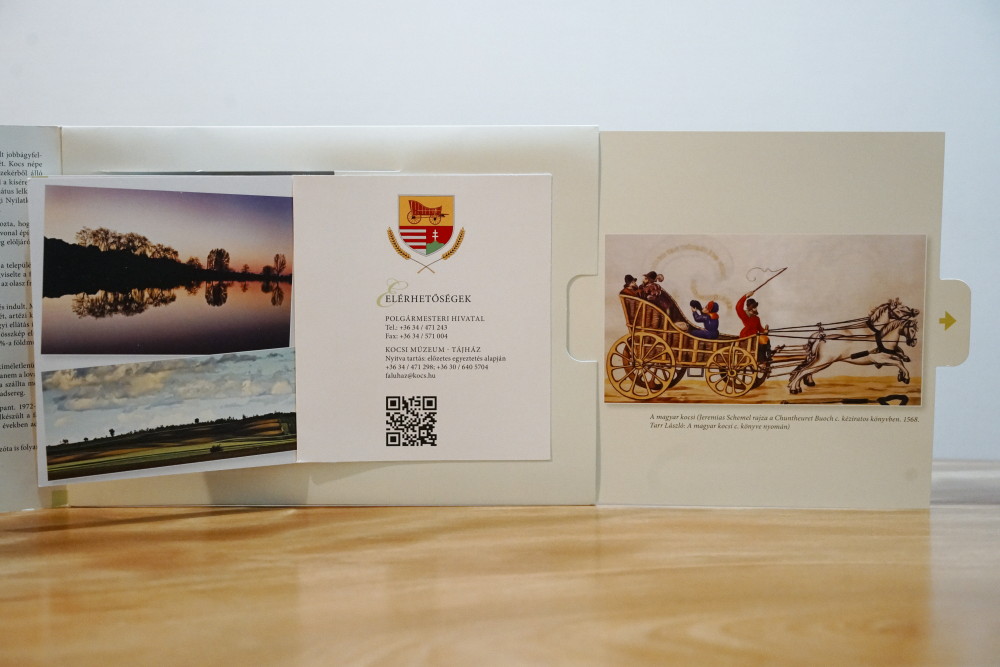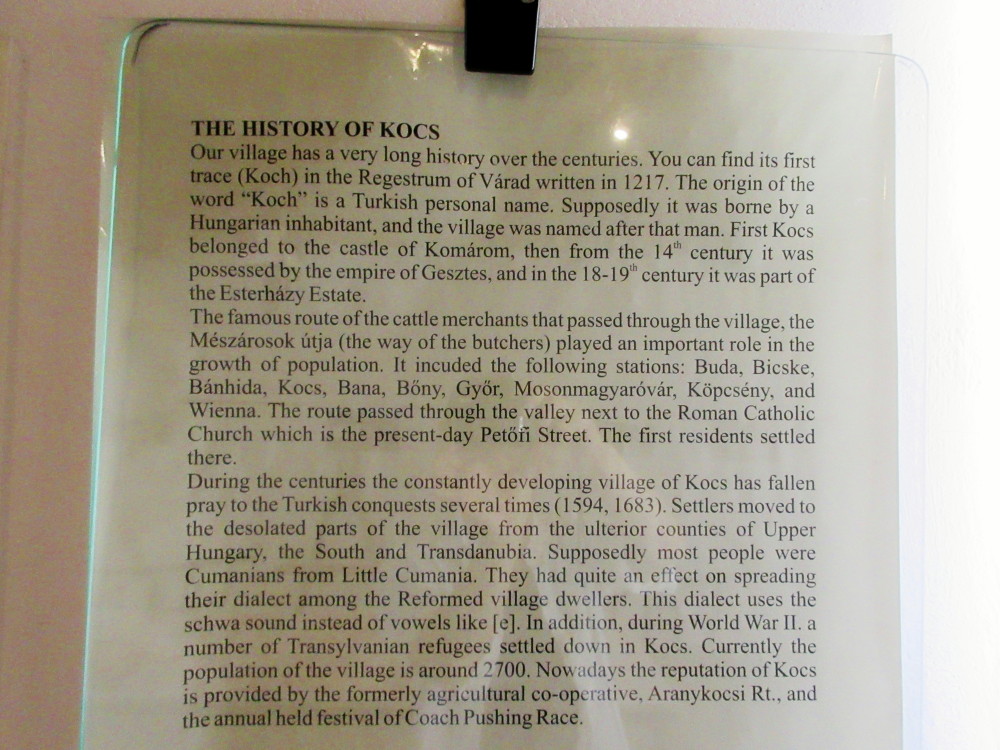コチの村長さんからコチ村を紹介した小冊子を頂きました。
美しいコチの風景を写した表紙をめくると、15世紀にコチで作られた馬車の写真が目に飛び込んできました。
コチ博物館にはこの馬車が復元されたものが展示されています。
小冊子の右側には、矢印→の付いたタブがあり、それを引っ張ってみると、
なんと馬車を牽く2頭の馬が勢い良く飛び出すとともに、それに合わせて小冊子のページがパラパラとめくられ始めました。
最後までタブを引っ張りきると、馬車の全体像とともに、小冊子の最後のページが開かれました。
なんとも馬車(Coach)の語源であるコチ(KOCS)に相応しいワクワクするような素敵な小冊子だと、いたく感動しました。
小冊子はハンガリーの公用語であるハンガリー語(マジャル語)で書かれているため、書かれている内容まで分かりませんでした。
そこで、コチ博物館の入り口近くに掲示されていた「コチの歴史」を紹介する(ハンガリー語と英語で書かれた)ボードの内容を紹介したいと思います。
以下にボードに英語で書かれていた文章を訳したものを掲載します。
ハンガリー語で読み方が分からない地名や人名などはそのままにしてあります。
KOCSの歴史
私達の村は数世紀に亘る長い歴史があります。その初めての記録(Kochという言葉)は、1217年の”Regestrum of Várad”に見つけることができます。“Koch”の語源はトルコ人の名前です。この村の名前はハンガリーに居住していたの男性の名前から付けられたとされています。最初にKocsはKomárom城の所有地でしたが、14世紀からはGesztes帝国に支配され、18世紀から19世紀にかけてはEsterházy家の所有する土地の一部となりました。
コチ村には、家畜商人が使用する有名な道(Mészárosok útja 肉屋の道)が通っていました。この道が村の人口増加に大きく貢献することになりました。この(肉屋の)道には、次のような停留地がありました:Buda, Bicske, Banhida, Kocs, Bana, Böny Györ, Mosonmagyaróvár, Köpcsény, そして Wienna。この道は、ローマカトリック教会の横の渓谷を通っており(現在のPetőfi Street)、先住民がそこに定住しました。
コチ村は、数世紀に亘り発展し続ける間に、幾度かトルコ軍の侵略の犠牲になりました(1594, 1683)。(侵略の犠牲となった)村の荒廃地には、ハンガリー北部の他の地域やハンガリー南部そしてTransdanubiaからの入植者が移り住みました。それらのほとんどがLittle Cumania からのCumania人であったと言われています。彼ら(Cumania人)の言葉は、再編成されたこの村の住民の方言に大きな影響を与えました。この方言は『e』という母音よりも、シュワー母音を使用しています。加えて、第2次世界大戦中はトランスバニアからの大勢の避難民が、コチに定住しました。現在のコチ村の人口は約2,700人です。今日では、コチ村の名は、旧農業共同組合(Aranykoosi Rt.)の会員であったことと、一年に一度開催されるCoach Pushing Race(馬車押しレース)としてよく知られています。
THE HISTORY OF KOCS
Our Village has a very long history over the centuries. You can find its first trace (Koch) in the Regestrum of Várad written in 1217. The origin of the word “Koch” is a Turkish personal name. Supposedly it was borne by a Hungarian inhabitant, and the village was named after that man. First Kocs belonged to the castle of Komárom, then from the 14th century it was possessed by the empire of Gesztes, and in the 18?19th century it was part of the Esterházy Estate.
The famous route of the cattle merchants that passed through the village, the Mészárosok útja (the way of the butchers) played an important role in the growth of population. It incuded the following stations: Buda, Bicske, Banhida, Kocs, Bana, Böny Györ, Mosonmagyaróvár, Köpcsény, and Wienna. The route passed through the valley next to the Roman Catholic Church which is the present-day Petőfi Street. The first residents settled there.
During the centuries the constantly developing village of Kocs has fallen pray to the Turkish conquests several times (1594, 1683). Settlers moved to desolated parts of the village from the ulterior counties of Upper Hungary, the South and Transdanubia. Supposedly most people were Cumanians from Little Cumania. They had quite an effect on spreading their dialect among the Reformed village dwellers. This dialect uses the schwa sound instead of vowels like[e]. In addition, during World War II, a number of Transylvanian refugees settled down in Kocs. Currently the population of the village is around 2700. Nowadays the reputation of Kocs is provided the by the formerly agricultural co-operative, Aranykoosi Rt., and the annual held festival of Coach Pushing Race.





